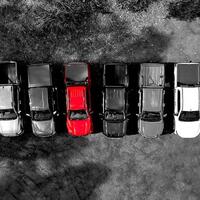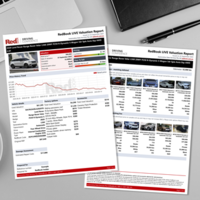The RedBook Insider: The Shifting Cost Dynamics of EVs: Then, Now, and What's Ahead
Over the last decade, the cost structure of Battery-Electric Vehicles (BEVs) has fundamentally transformed, driven by technological advancements and evolving priorities in vehicle production. Comparing BEV material costs from 10 years ago to today and projecting forward to 2030 reveals a clear trend: E-drive components are taking centre stage, while battery costs are gradually diminishing as a share of total OEM costs.
In 2016, battery systems dominated BEV production, accounting for over 40% of OEM costs, as seen in industry analyses. Vehicle bodies and electronic control systems comprised significant proportions, while motors and E-drive systems held a relatively modest share. Fast-forward to 2023, and improvements in battery technologies have reduced their cost proportion to around 38%, with electric motors and E-drive-related parts seeing noticeable increases.
China BEV OEM Cost Analysis

Source: E-Drive parts mainly considered the autonomous related and AI functions support. Wikipedia, CPCA, desk research, RedBook Chia analysis.
Looking ahead to 2030, this shift will accelerate. Projections suggest E-drive components—including motors—will account for nearly a third (32%) of OEM costs. Meanwhile, battery costs, though still substantial, will dip further to around 30%, signalling greater efficiency and lower per-kWh production costs. Key factors driving this decline include advancements in battery chemistry, economies of scale in manufacturing, and increased mining and refining efficiencies for critical minerals like lithium, nickel, and cobalt.
Trends in China and the Impact on Australia
China, as the largest EV market globally, has been a driving force behind these cost reductions. Massive government incentives, domestic production of key battery materials, and heavy investment in giga-factories have enabled economies of scale that are now influencing global BEV production costs. As Chinese automakers, such as BYD and NIO, expand their global reach, these efficiencies will inevitably flow into markets like Australia, potentially lowering BEV purchase prices.
In Australia, where BEV adoption has lagged behind other markets, these cost reductions could prove transformative. Currently, the selection of BEVs in Australia is constrained by price points and a limited supply of affordable models. However, with reductions in battery costs and increased competition driven by Chinese manufacturers, Australian consumers may soon see a broader range of BEVs at more competitive price levels.
What’s Next?
The evolving BEV cost landscape highlights a fundamental industry shift. As battery and vehicle body costs stabilize, investments in E-drive innovation will lead to a more efficient cost mix by 2030. For automakers, managing these cost transitions is critical to remain competitive as BEVs edge closer to price parity with Internal Combustion Engine (ICE) vehicles. For Australia, this global shift presents an opportunity: greater affordability and choice may accelerate BEV adoption, transforming the country’s automotive landscape.
Recent Posts
-
 The RedBook Insider: Emerging Divergence in the Popular 4x4 Ute Segment: Heavy-Duty Performance vs Hybrid-Electric Innovation30th September 2025
The RedBook Insider: Emerging Divergence in the Popular 4x4 Ute Segment: Heavy-Duty Performance vs Hybrid-Electric Innovation30th September 2025 -
 The RedBook Insider: Introducing RedBook LIVE: Smarter, Faster, and More Accurate Automotive Intelligence30th September 2025
The RedBook Insider: Introducing RedBook LIVE: Smarter, Faster, and More Accurate Automotive Intelligence30th September 2025 -
 The RedBook Insider: Introducing the RedBook Insider Webinar Series30th September 2025
The RedBook Insider: Introducing the RedBook Insider Webinar Series30th September 2025
